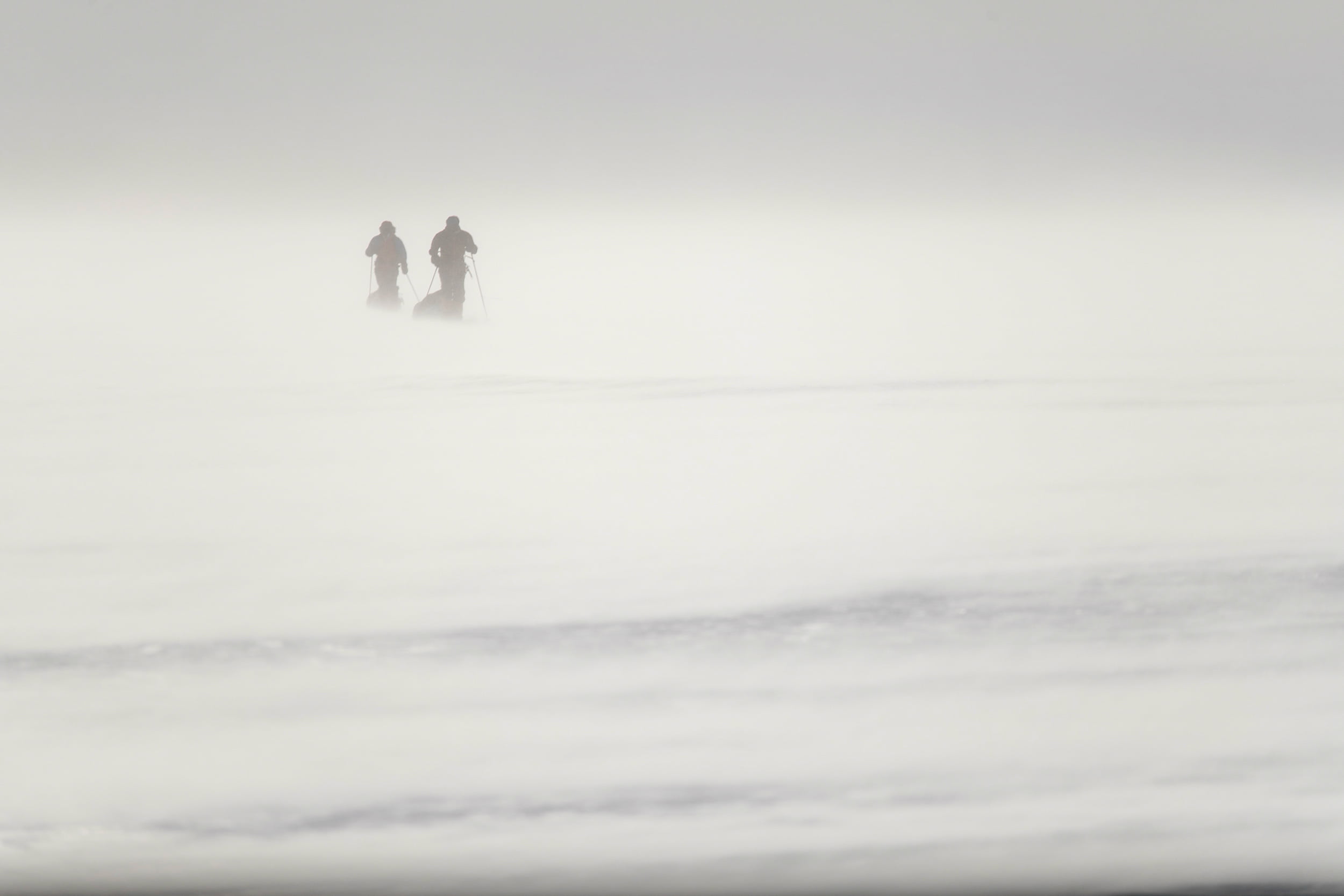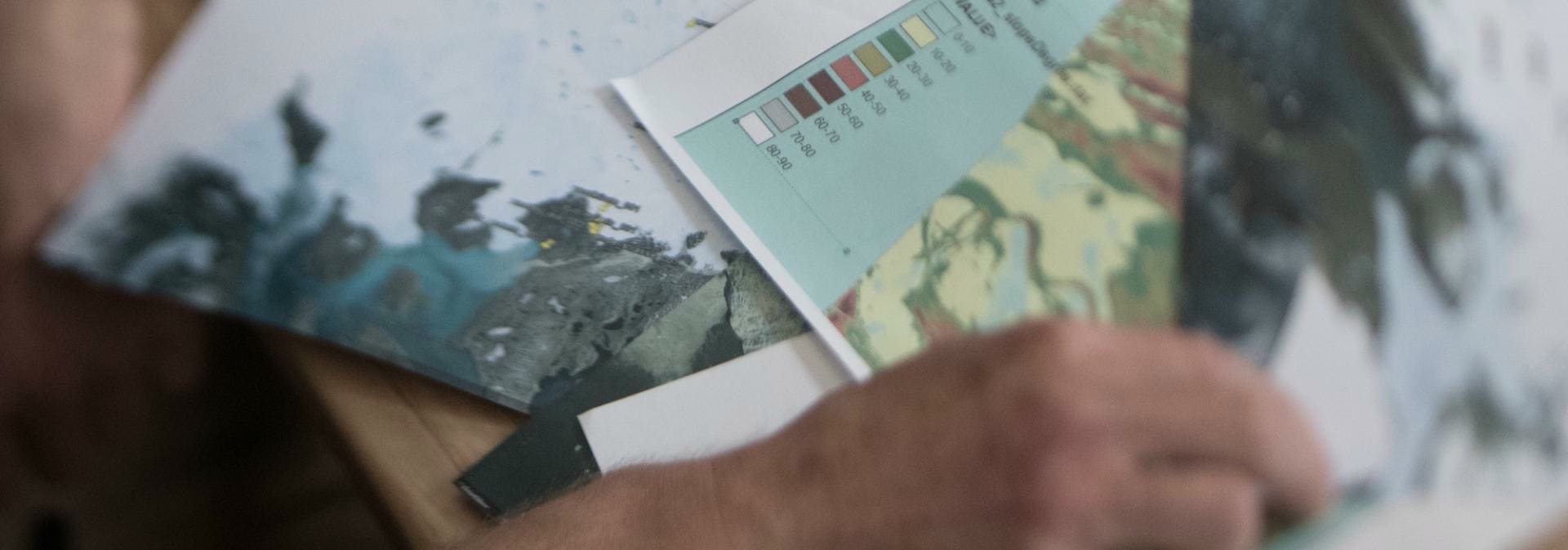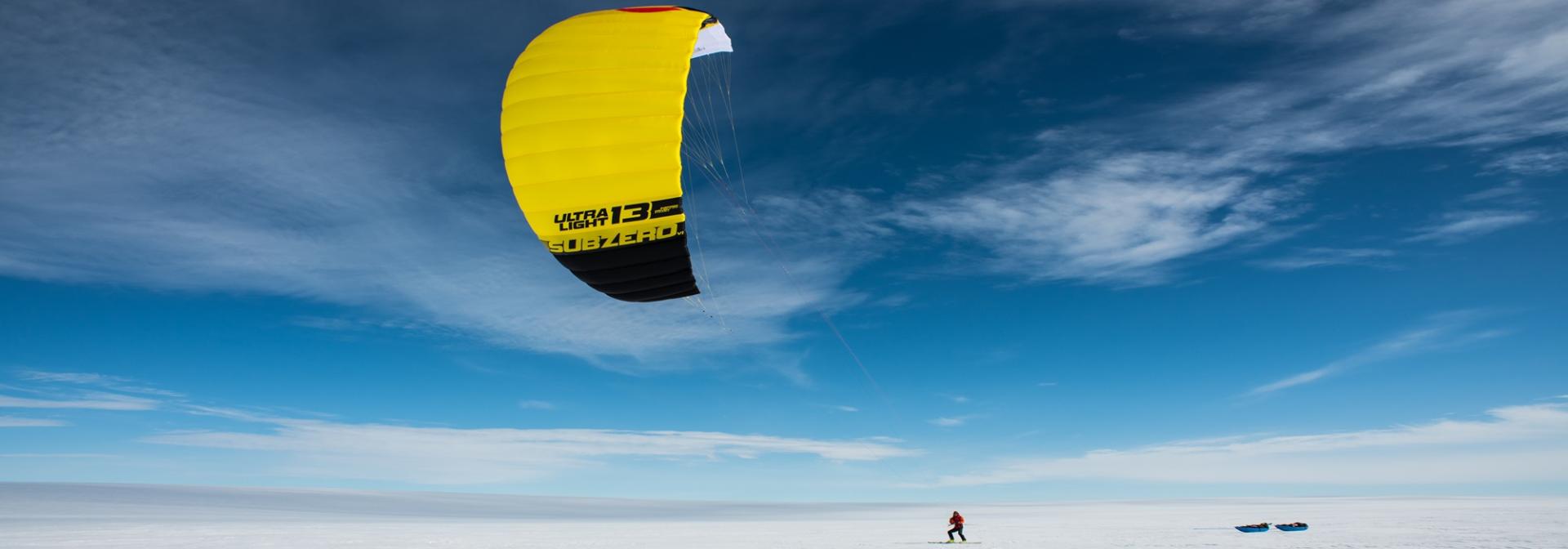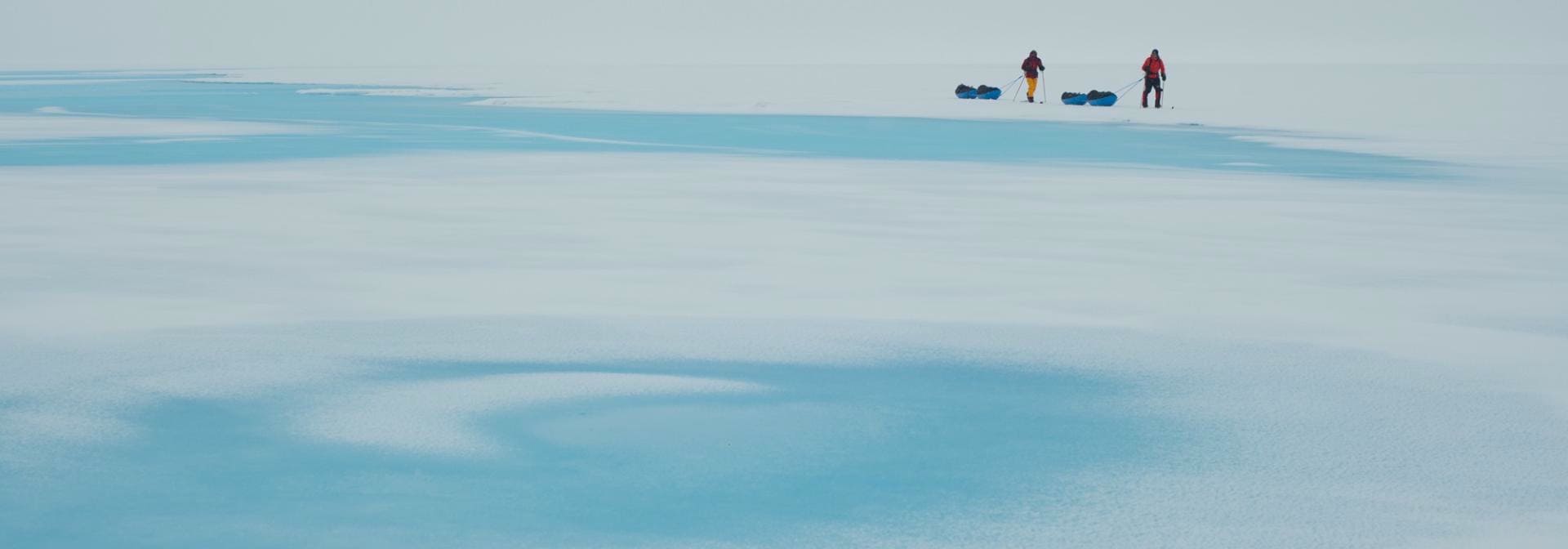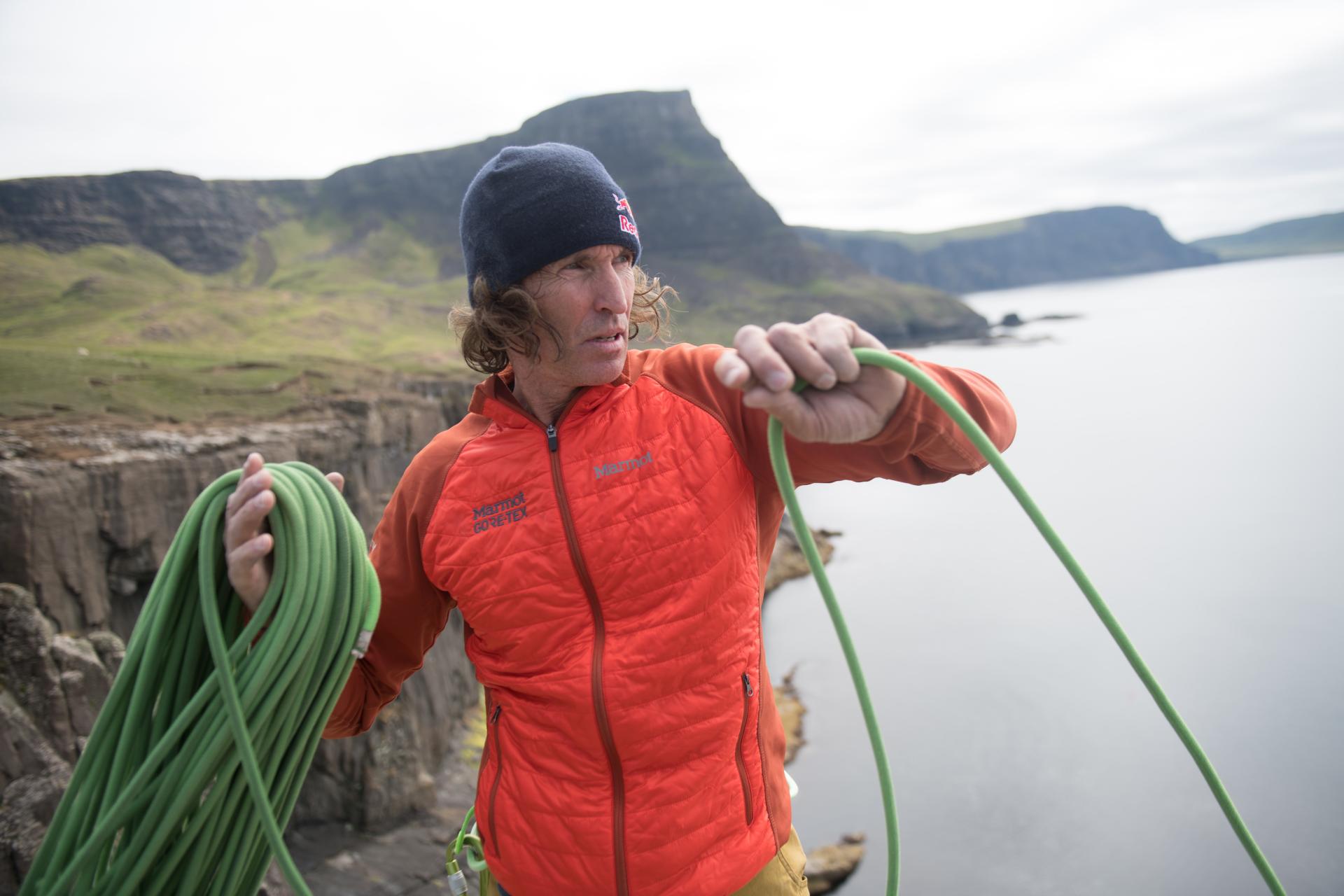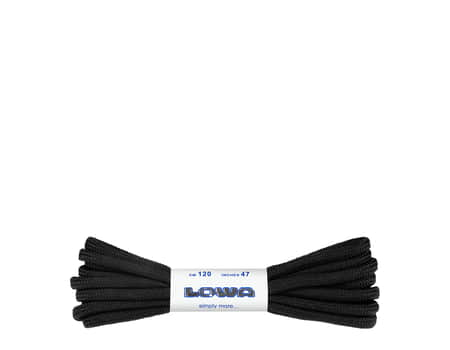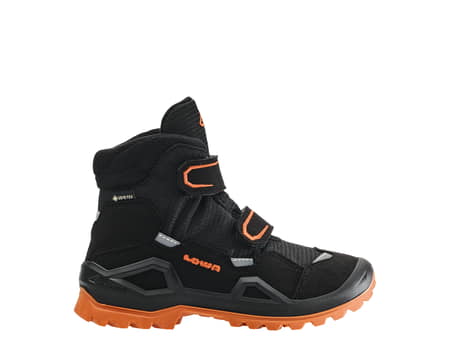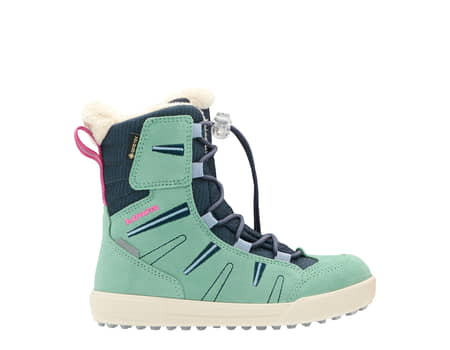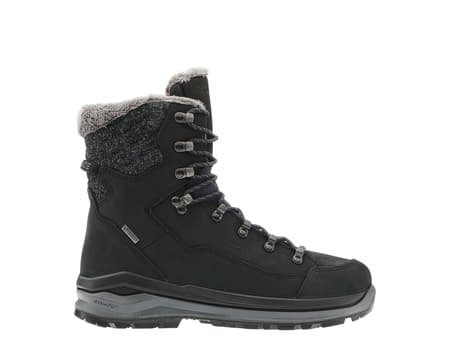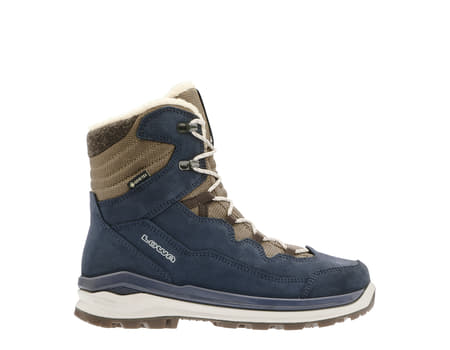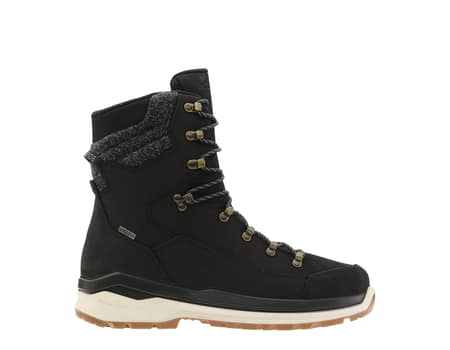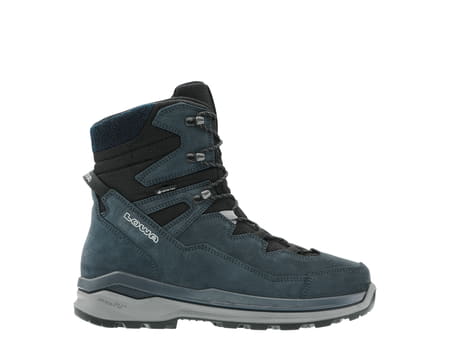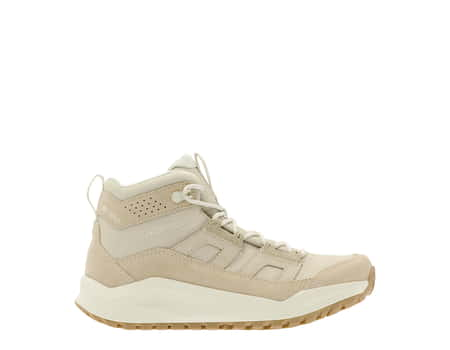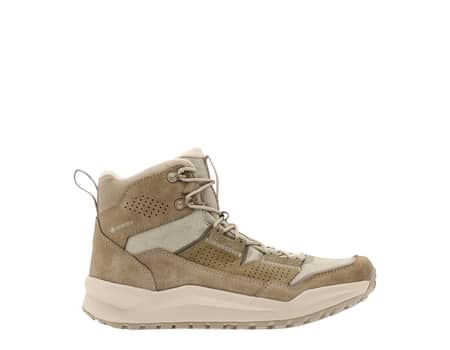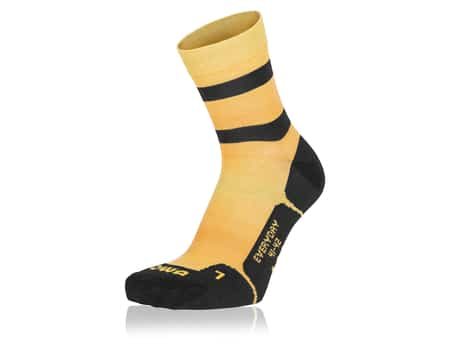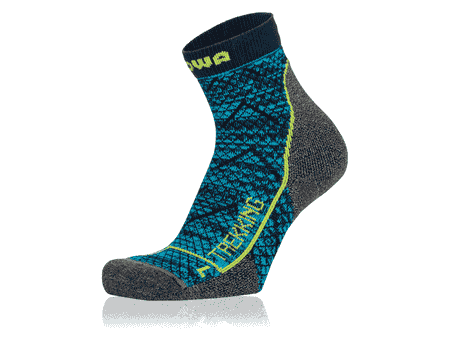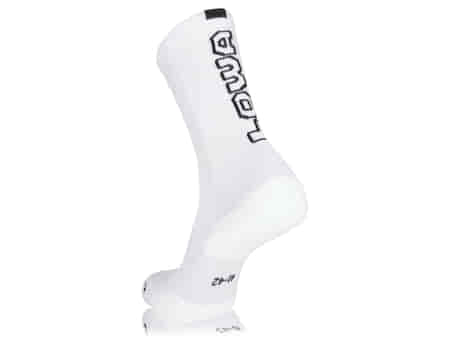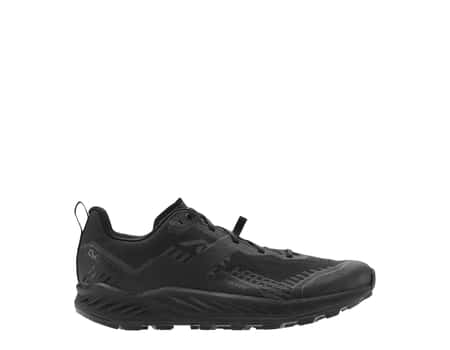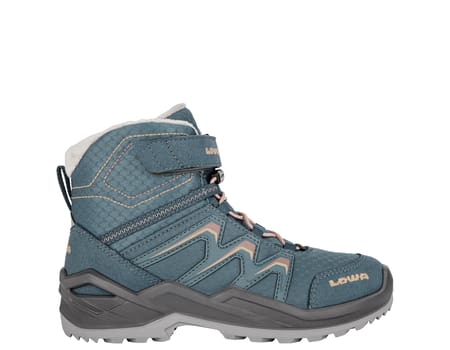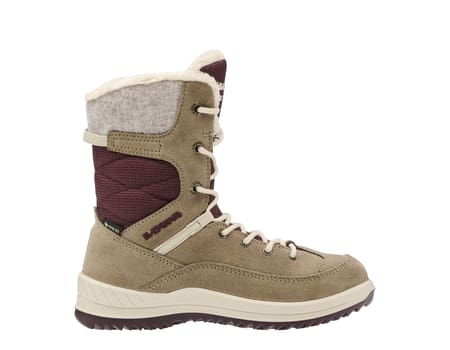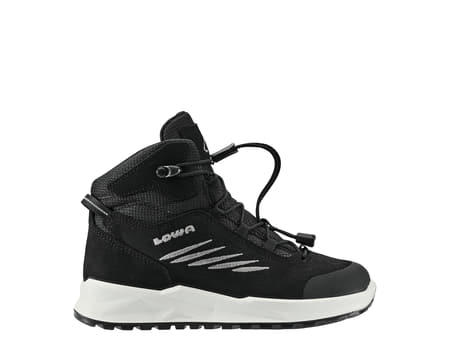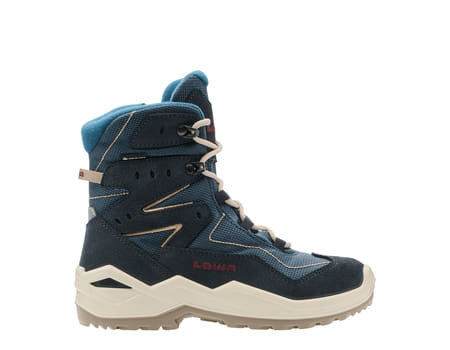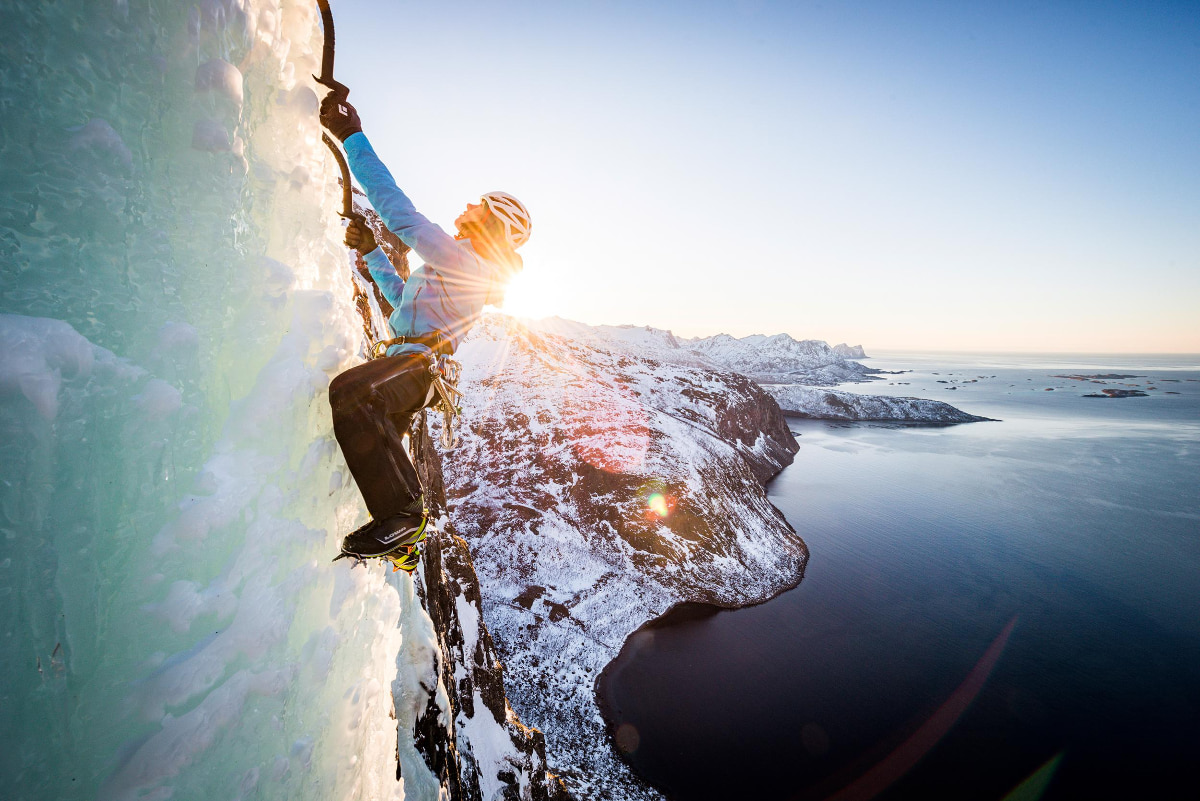From coast to coast
Greenland - Professional mountaineer, extreme climber and LOWA PRO Team athlete Stefan Glowacz set himself a special expedition goal in the summer and autumn of 2018: Greenland and back - by boat, on skis and by kite.
On 11 July 2018 at half past nine in the morning, he set off from the west coast of Scotland: the sailing boat "Santa Maria" set sail and the adventure began. Glowacz was accompanied on this expedition by Philipp Hans, Thomas Ulrich and the crew of skipper Wolf Kloss, son Dani Kloss and mate Jan Kiehne. While Glowacz and his crew wanted to fight their way across the Greenland ice sheet, the ship's crew had the southern tip of Greenland on their agenda - around 1,800 nautical miles. Both teams had a good month to meet up again at the agreed meeting point of Scoresbysund on the east coast. But right at the start of the expedition, the schedule began to falter. Firstly, the sailing boat had to brave strong storms, while icebergs, fog and northerly winds on the west coast of Greenland made the journey even more difficult. Before reaching the Greenland mainland, the endeavour was already ten days behind schedule. Glowacz, Hans and Ulrich went ashore for the first time in Disko Bay in Atta Sund. This is where the two crews parted ways.
THE RACE BEGINS
Glowacz, Hans and Ulrich had given themselves around 30 days to cross the inland ice. An adventurous endeavour that was only conceivable with the use of kites. However, the conditions were extreme. Temperatures plummeted to minus 40 degrees Celsius. "In the morning, when I took my arm out of my sleeping bag, I felt like I was reaching into a deep freeze. The problem was that I had to jump right in with the rest of my body," says Stefan Glowacz, describing the icy temperatures. The wind while kiting did the rest to cool the men down even further. However, every kilometre with the kites saved them the hassle of walking. They made good progress and the initial concerns and worries about not making it suddenly disappeared: The inland ice team managed the scheduled 1,000 kilometres better and faster than expected.
LEAVING THE CREW
Unfortunately, things did not go so well for the ship's crew. At the beginning of September, the "Santa Maria" was still in the fjord of Tasiilaq, over 700 nautical miles away from the meeting point. Mate Jan had contracted an infection on his finger and had to be treated in the city. The slow onset of autumn storms also meant that the sailing ship was unable to continue. The expedition was on the brink of cancellation. But a few days later the all-clear was given: the "Santa Maria" was able to continue its journey. Unfortunately, mate Jan had to pull out due to his injury, but skipper Wolf sailed on with his son Dani.
THEY MADE IT
Glowacz, Hans and Ulrich stood in their camp 100 metres above the water on 17 September and saw the "Santa Maria" sail into the bay behind an iceberg. Both crews had made it. Together they set off on their return journey. After short nights, metre-high wave crests and fierce autumn storms, the almost complete crew finally reached the port of Mallaig on the west coast of Scotland on 6 October after a good three months.
"I have experienced dimensions in the deserts of water and ice that I never thought possible. Getting out of the tent in the morning and seeing nothing but a white plain as far as the horizon. Hanging on the kite and watching the snow whizz past under my skis. Crawling back into the tent in the evening after ten hours in the storm and feeling safe. I will never forget these moments. For me, they represent the true richness of life."
THE EXPEDITION WOULD HARDLY HAVE BEEN POSSIBLE WITHOUT KITES
I experienced dimensions in the deserts of water and ice that I never thought possible. Getting out of the tent in the morning and seeing nothing but a white plain as far as the horizon. Hanging on the kite and watching the snow whizz past under my skis. Crawling back into the tent in the evening after ten hours in the storm and feeling safe. I will never forget these moments. For me, they represent the true richness of life.
A SINGLE AGONY
The "From Coast to Coast" expedition was a success. But Stefan Glowacz couldn't really celebrate it. There was another item on his expedition list that he couldn't tick off: the first ascent of a big wall in Greenland. However, the persistent snowfall left no hope of achieving this goal.
MISSING PIECE OF THE PUZZLE
The missing piece that Glowacz still needed to successfully complete the Greenland adventure puzzle was to be put in place in 2019: the first ascent of the 1,300 metre high north face of Grundtvigskirken (1,977 metres) on the east coast of Greenland. The expedition will start again at the beginning of July in Starnberg. This time they will be travelling by train to Scotland and from there back to Greenland via Iceland on the "Santa Maria", the ship from last year's expedition. The aim is to minimise the ecological footprint of this trip as much as possible. After a few days' delay, the rope team led by Stefan Glowacz, Philipp Hans, Markus Dorfleitner, Christian Schlesener and photographer Moritz Attenberger and the ship's crew were able to dock in Greenland at the end of July and set up base camp at the foot of Grundtvigskirken on 1 August.
LUCK IN MISFORTUNE
The very next morning, the time had finally come. Early in the morning, the climbers made their way from base camp to the start of the north face. Stefan Glowacz and Philipp Hans, who had already been on the expedition the year before, were the first to climb the wall, while the rest of the team waited at the base of the wall near a glacial moraine. The plan was simple: divided into two teams, they were to work on the wall at intervals of one to two days. But this plan was not to materialise. After about 50 metres, just as Stefan was drilling two bolts and fixing rope into them, there was a loud crack. "The guys down on the glacier also heard it and everyone assumed that the noise was coming from the glacier ice," says the LOWA PRO team athlete, explaining the dicey situation. But when it cracked again shortly afterwards, Stefan realised: it wasn't the glacier! "I'm completely unprotected and firmly fixed at the belay station. There's no ledge nearby that I could flee under in the event of a rockfall. It cracks a third time, much louder than before. Panic rises inside me. I know at this moment that something terrible is going to happen at any moment, it's just a question of which dimension: a few stones or a whole rock avalanche?" the extreme climber notes in his diary. The worst was to come. Around 100 metres above them, a table-sized slab of granite broke silently out of the rock and hurtled towards Stefan and Philipp, who was hanging 15 metres below Stefan on the wall. All they could do now was press as hard as they could against the wall and pray. They were lucky! About 50 metres above them, the slab shattered on a rock ledge: "The chunks whizzed down to the left, right and behind us like projectiles. A stone hits my right thigh with a dull thud, followed by a sharp pain. Then the next impact on my right forearm," Glowacz documents the rockfall. "At that moment, I didn't feel any fear or panic, I was just completely calm. The impacts around me diminished and suddenly there was only silence. I was still holding my position and waiting for the next chunks. The shock made me feel sick as I slowly stood up. I was afraid to check on Philipp, but miraculously he had only been 'grazed' on the thigh," explains Stefan with relief. In pain and with bleeding wounds, the only thing left to do was to get away from the wall as quickly as possible. On the moraine, those waiting received Stefan and Philipp and tended to Stefan's wounds. Some of them returned to base camp, while Philipp and Christian tried again in two other places. In vain! The attempt the next day was also unsuccessful - the north face is too brittle and therefore too unpredictable.
SUFFER AND SMILE - BOYS DON'T CRY
The team decided to switch to the south ridge and try the south face. No sooner said than done! We set off on 6 August - Stefan was also determined to take part. Taking painkillers and only with the help of his team mates, who took some of his luggage and kept on encouraging and motivating him, was it even possible to think about it. Even though Stefan Glowacz had already survived many tours and expeditions, this experience on the wall had not left him unscathed. "I am completely insecure. I struggle with myself with every step, every kick and every hold. Panic keeps rising in me at particularly exposed points. It's just physical and mental torture," says the LOWA PRO Team athlete, describing his emotional state. Late in the evening, they reached the spot they had chosen for the bivouac. They continued the next morning and although they made good progress, it took until shortly after midnight for Stefan Glowacz and his team colleagues Philipp Hans, Markus Dorfleitner, Christian Schlesener and photographer Moritz Attenberger to reach the summit after 16 hours.
They descended via the same route they had already taken. They took a short break at their bivouac site and then arrived back at base camp shortly before midnight. They had made it. The Greenland adventure puzzle was complete. The name of the tour was quickly decided after a glass of Scotch whisky: suffer and smile - boys don't cry!
"In the east, a blood-red stripe already hints at the rising of the sun, which has never actually set. To the north, countless huge icebergs shimmer in the diffuse blue of the non-existent night. There is no wind at all and I am simply happy and grateful at this moment. Especially the guys, without whose commitment, encouragement and help I would never have made it to the summit!"
